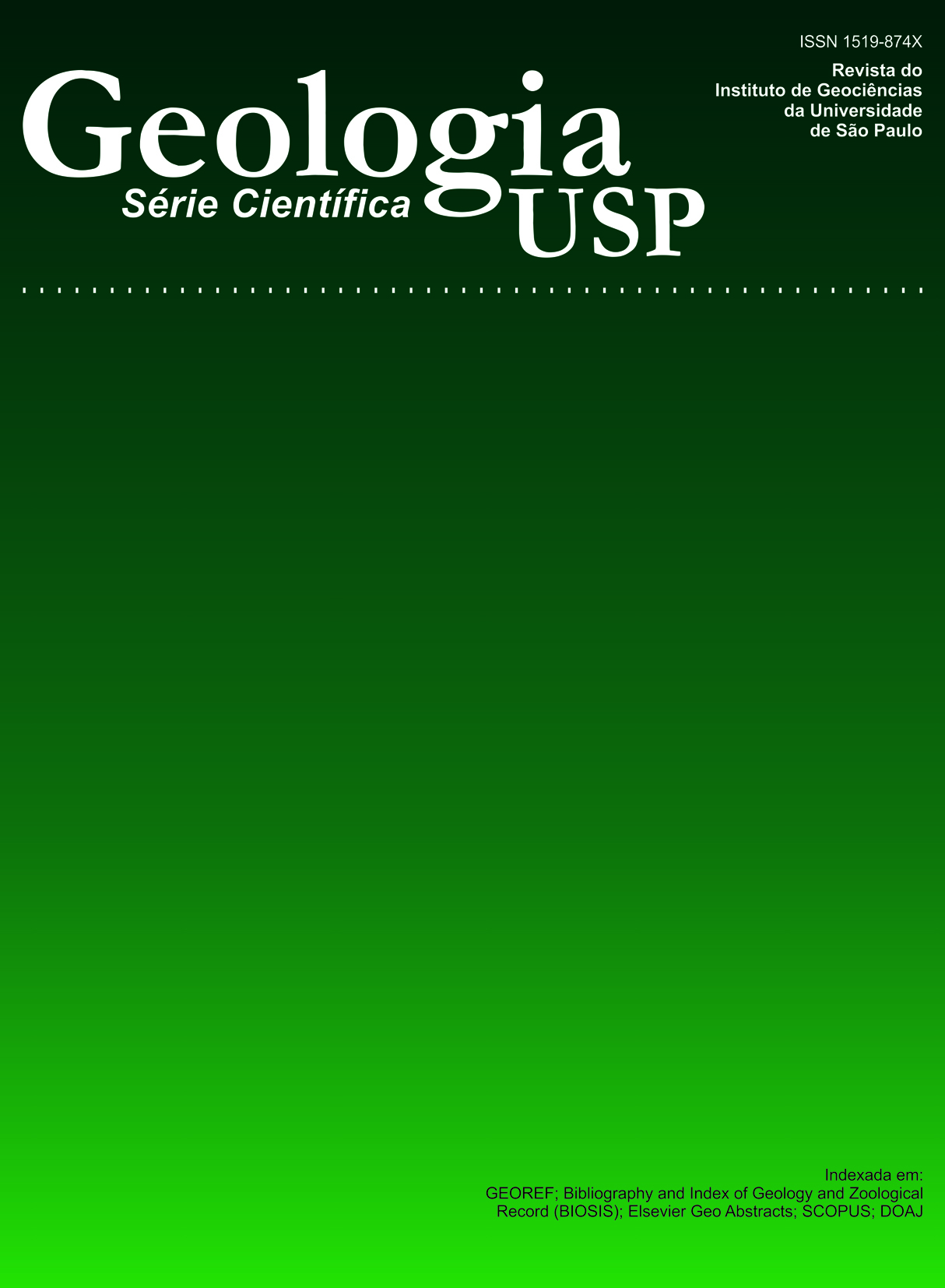Litoquímica, geocronologia U-Pb e Geologia isotópica (Sr-Nd-Pb) das rochas graníticas dos batólitos Cunhaporanga e Três Córregos na porção sul do Cinturão Ribeira, Estado do Paraná
DOI:
https://doi.org/10.5327/S1519-874X2003000100005Keywords:
Ribeira belt, granitic batholiths, geochronology, isotopic geochemistryAbstract
During evolution of the southern part of the Ribeira Belt in Paraná State, the Brasiliano-Pan-African Cycle was responsible for the generation of a large volume of granitic rocks among which the Cunhaporanga (BCP) and Três Córregos (BTC) batholiths stand out. Studies of rock chemistry and isotopic compositions show that differences exist both between and within the batholiths. The main difference between the batholiths is in the behaviour of the alkalies. The BCP is more potassic, while the BTC is more sodic. The isotopic data clearly show the participation of different lower crustal sources with long crustal residence times, given by the isotopic composition of Pb in K-feldspar, by the negative values of µNd (-11 to -13 for BCP and -17 to -19 for BTC), and by the model Nd T DM ages (1.8 - 2.0 Ga for BCP and 2.2 - 2.4 Ga for BTC). These sources are situated in Paleoproterozoic continental crust, and different proportions of mantle and crustal contributions are involved in the genesis of the BCP and BTC granites. The Ribeirão Butiá Unit of the BCP and the Arrieiros and Paina units of the BTC are mainly composed of monzogranite and granodiorite with rare tonalite, comprising metaluminous, medium- to high-K calc-alkaline rocks formed between 630 and 620 Ma at an active continental margin. The Piraí do Sul and Santa Rita units of the BCP are formed by slightly peraluminous, high-K monzogranite, while the São Sebastião and Conceição units of the BTC are composed of high-K, slightly metaluminous quartz monzonite and monzo- to syenogranite, respectively. These units were formed under a syn- to late-collisional regime between 620 and 590 Ma.Downloads
Download data is not yet available.
Downloads
Published
2003-08-01
Issue
Section
Articles
License
Authors who publish in this journal shall comply with the following terms:
- Authors keep their copyright and grant to Geologia USP: Série Científica the right of first publication, with the paper under the Creative Commons BY-NC-SA license (summary of the license: https://creativecommons.org/licenses/by-nc-sa/4.0 | full text of the license: https://creativecommons.org/licenses/by-nc-sa/4.0/legalcode) that allows the non-commercial sharing of the paper and granting the proper copyrights of the first publication in this journal.
- Authors are authorized to take additional contracts separately, for non-exclusive distribution of the version of the paper published in this journal (publish in institutional repository or as a book chapter), granting the proper copyrights of first publication in this journal.
- Authors are allowed and encouraged to publish and distribute their paper online (in institutional repositories or their personal page) at any point before or during the editorial process, since this can generate productive changes as well as increase the impact and citation of the published paper (See The effect of Open Access and downloads on citation impact).
How to Cite
Prazeres Filho, H. J. dos, Harara, O. M., Basei, M. A. S., Passarelli, C. R., & Siga Jr., O. (2003). Litoquímica, geocronologia U-Pb e Geologia isotópica (Sr-Nd-Pb) das rochas graníticas dos batólitos Cunhaporanga e Três Córregos na porção sul do Cinturão Ribeira, Estado do Paraná . Geologia USP. Série Científica, 3, 51-70. https://doi.org/10.5327/S1519-874X2003000100005





